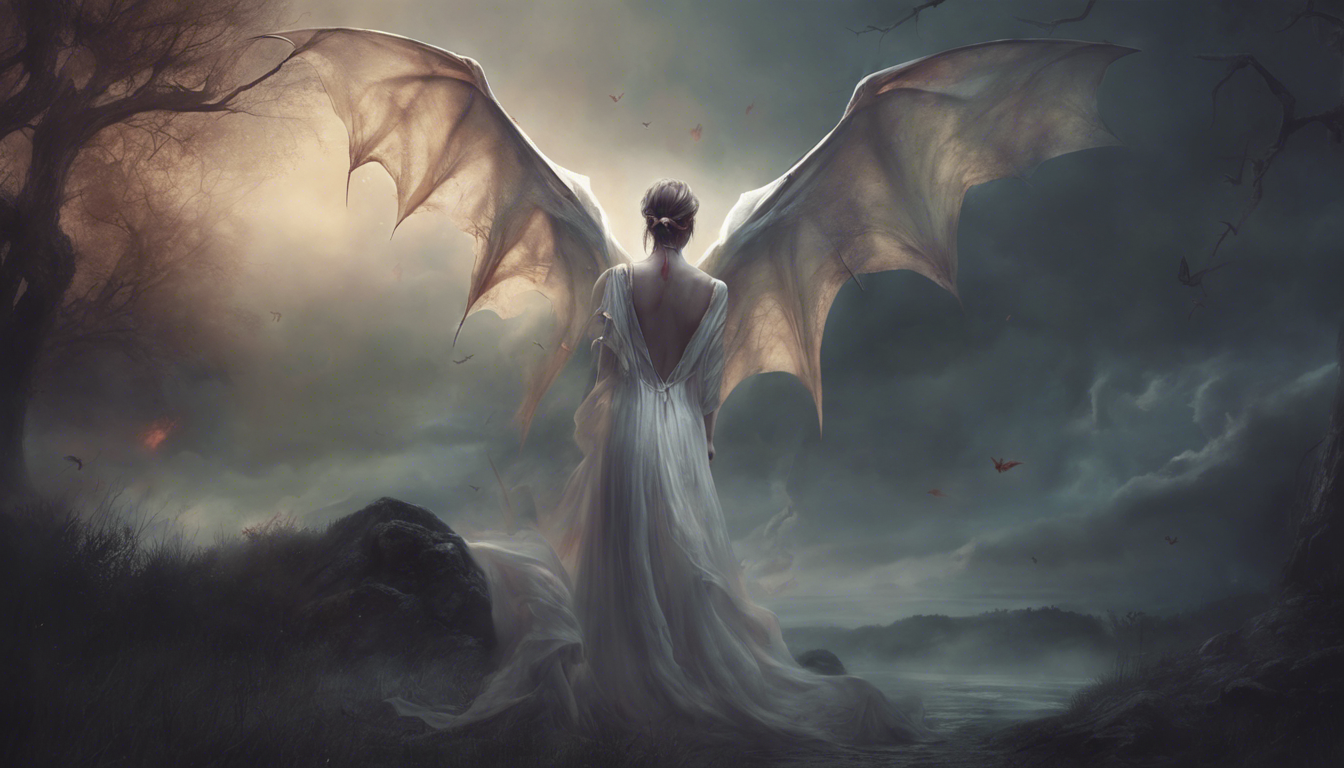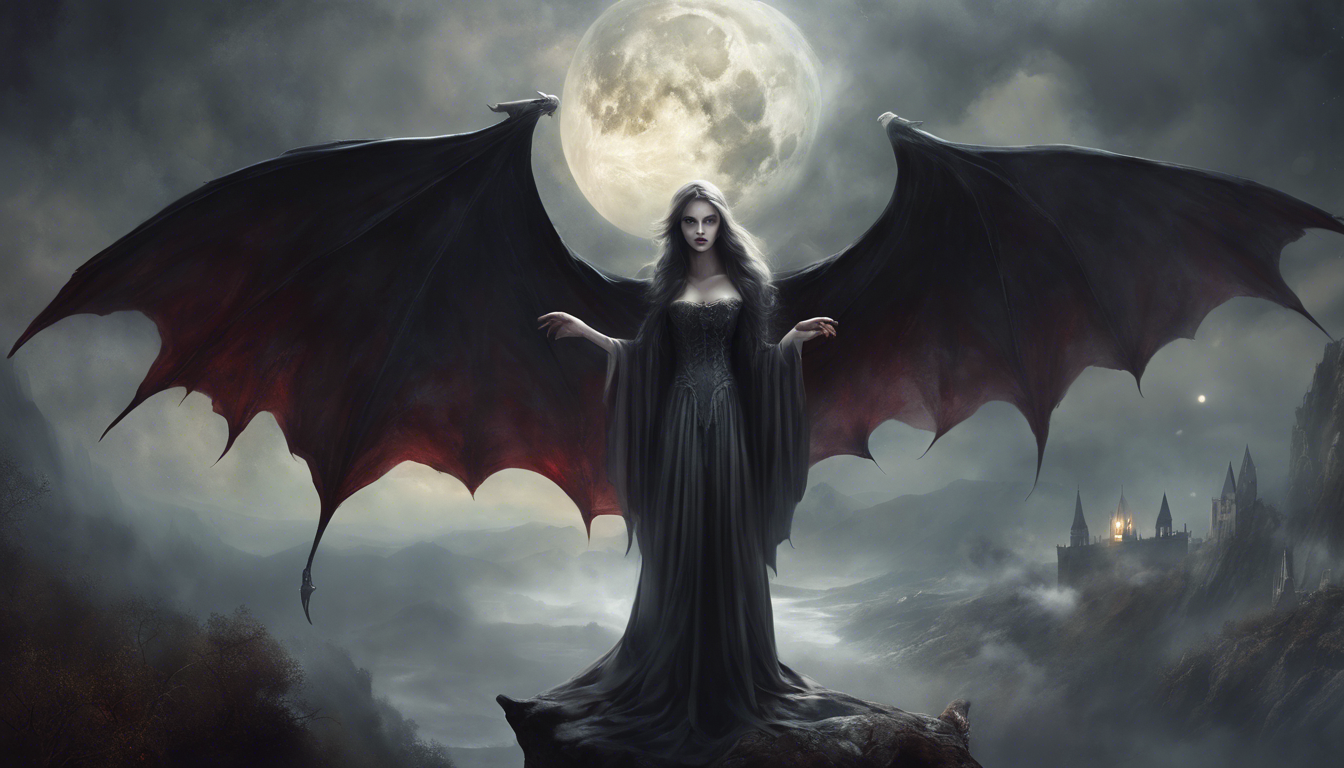Sure, here is a short engaging introduction in English for the article on “What is the Meaning of Vampire in Folklore and Culture?”:
“Vampires have long captured the imagination of people around the world, appearing in folklore and pop culture as iconic figures of mystery and fear. But what do these creatures truly symbolize in different cultures? This article delves into the fascinating history and varied interpretations of vampires, shedding light on their profound significance in folklore and culture. Join us on a journey to uncover the hidden meanings behind these enigmatic beings.”
The Origins of the Vampire Myth

Vampires have long fascinated and terrified people across cultures and throughout history. The origins of the vampire myth can be traced back to various ancient civilizations and folklore, each contributing different elements to the complex creature we know today.
Early Beliefs and Folklore
In ancient Mesopotamia, there were tales of demonic entities or immortal beings who consumed blood to sustain themselves. Similar beliefs can be found in ancient Greek and Roman mythology, with creatures like the Lamia and Empusa known for draining the life force of humans.
Eastern European folklore, particularly in regions like Slavic countries, introduced the idea of the strigoi – the restless souls of the dead who returned to prey on the living. These creatures were often associated with disease, creating a link between vampirism and the spread of illness.
Historical Influences
The word “vampire” itself has roots in various languages, including the Serbian “vampir” and Hungarian “vámpír.” Slavic and Balkan traditions heavily influenced vampire mythology, with stories of the undead rising from their graves to terrorize villages at night.
During the medieval period in Europe, widespread fear of the supernatural led to the belief in vampires as corporeal beings who could be killed or repelled using specific rituals and objects. This era saw the rise of vampire hunting as a cultural practice.
Literary Evolution
One of the most significant contributors to the modern vampire myth was Bram Stoker’s novel “Dracula,” published in 1897. Stoker’s creation of Count Dracula, a charismatic yet malevolent vampire from Transylvania, solidified many vampire tropes still used today.
Over the years, the vampire evolved in literature and popular culture, from the romantic and tortured figures of Anne Rice’s “Interview with the Vampire” to the sparkly vampires in the “Twilight” series by Stephenie Meyer.
Enduring Fascination
The vampire myth continues to endure in contemporary media, with numerous films, TV shows, and novels exploring different facets of vampirism. Whether depicted as monsters or tragic antiheroes, vampires remain a staple of horror and fantasy genres, captivating audiences with their eternal allure and dark mystique.
Vampires in Different Cultures

Throughout history, vampires have been a prevalent figure in various cultures around the world. From the ancient myths of Eastern Europe to modern-day pop culture, the concept of vampires has evolved and taken on different meanings. Let’s explore how vampires are depicted in different cultures.
Vampires in Eastern European Folklore
Vampires in Eastern European folklore are often portrayed as undead beings who rise from their graves to drink the blood of the living. These vampires are feared for their ability to transform into bats or wolves and their aversion to garlic and crosses. Legends of vampires in countries like Romania and Serbia have inspired countless vampire stories and movies.
Vampires in Asian Mythology
In Asian cultures, vampires take on different forms. For example, in Chinese folklore, “jiangshi” are reanimated corpses that hop around draining the life force of the living. These vampires are often depicted as stiff and awkward, hopping with their arms outstretched. In Japan, the “Yūrei” are vengeful spirits that can also be considered a type of vampire, seeking revenge on the living.
Vampires in Modern Western Culture
In modern Western culture, vampires have been romanticized and popularized through movies and literature. From Bram Stoker’s iconic “Dracula” to the “Twilight” series, vampires have been portrayed as charismatic and alluring creatures with supernatural abilities. These modern vampire stories often focus on themes of immortality, forbidden love, and the struggle between good and evil.
Overall, the depiction of vampires in different cultures reflects the fears and beliefs of societies throughout history. Whether seen as monstrous creatures of the night or seductive immortal beings, vampires continue to captivate our imagination and fuel our fascination with the supernatural.
The Evolution of the Vampire in Modern Culture

Vampires have long been a fascinating and mysterious creature in human folklore, with their representation evolving significantly in modern culture. From ancient myths and legends to contemporary literature, movies, and TV shows, the image of the vampire has undergone a transformation that reflects the shifting values and beliefs of society.
The Traditional Vampire
Traditionally depicted as undead beings who feed on the blood of the living, vampires were often portrayed as evil, seductive, and powerful entities. In early Eastern European folklore, vampires were seen as malevolent spirits that rose from the grave to terrorize villages and spread disease.
The Romantic Vampire
With the rise of Gothic literature in the 18th century, the image of the vampire took on a more romanticized and complex persona. Authors like Bram Stoker with his iconic character Dracula, portrayed vampires as seductive, immortal beings with tragic backgrounds and eternal loneliness.
The Modern Vampire
In contemporary culture, vampires have become popular characters in various forms of media, from books like the Twilight series to TV shows like True Blood and movies such as Interview with the Vampire. The modern vampire is often depicted as a troubled anti-hero, struggling with their immortality and desire for blood.
The Evolution of Vampire Lore
As society’s values and beliefs continue to change, so does the portrayal of vampires in popular culture. The vampire now serves as a reflection of our modern obsessions with immortality, romance, and the supernatural, offering a lens through which we can explore human desires and fears.
In conclusion, the evolution of the vampire in modern culture showcases how a mythical creature can adapt and transform over time to remain relevant and captivating to audiences worldwide.
The Symbolism of Vampires in Folklore and Literature
Throughout history, vampires have captured the imaginations of people around the world. These mythical creatures, often depicted as undead beings who feed on the blood of the living, have long been symbols of various themes and concepts in both folklore and literature.
The Allure of Vampires
Vampires are often portrayed as seductive and charismatic figures, drawing victims in with their charm and mysterious allure. This symbolism of temptation and desire has been a prevalent theme in vampire lore, reflecting the idea of succumbing to forbidden pleasures.
Fear and the Unknown
Vampires also symbolize fear of the unknown and the darkness within ourselves. Their nocturnal nature and ability to transform into bats or wolves evoke a sense of primal terror, representing the monstrous aspects of human nature that we may fear to confront.
Immortality and Power
Another key symbolism of vampires is that of immortality and power. By living beyond the natural lifespan of humans and possessing supernatural abilities, vampires represent the desire for eternal life and the ability to overcome death itself.
The Struggle Between Good and Evil
In many vampire stories, there is a constant struggle between the protagonist’s humanity and the darker, more predatory nature of the vampire. This duality symbolizes the eternal conflict between good and evil within each individual, highlighting the moral choices we face in our own lives.
Symbolism in Literature
Vampires have been popular subjects in literature for centuries, from Bram Stoker’s “Dracula” to modern vampire romance novels. In these works, the symbolism of vampires is often used to explore complex themes such as sexuality, power dynamics, and mortality.
The symbolism of vampires in folklore and literature is rich and multifaceted, reflecting a range of human fears, desires, and moral dilemmas. By understanding the deeper meanings behind these mythical creatures, we can gain insights into our own psyche and the timeless themes that continue to fascinate us about vampires.


Article written by Dera
Greetings, I am Dera, a 35-year-old individual with a deep passion for spirituality. Through my website, I aim to share my insights and knowledge to help others on their spiritual journey. Join me on the path to inner peace and enlightenment.